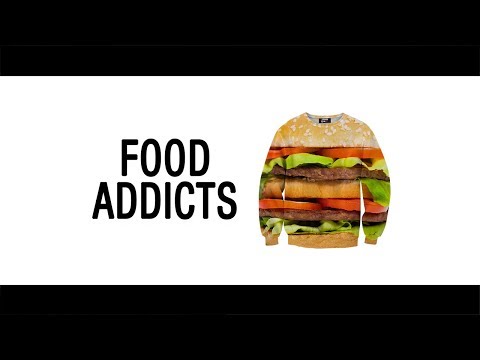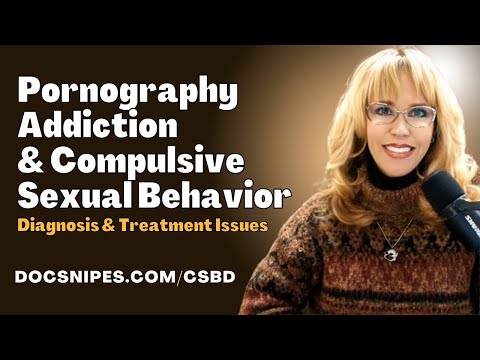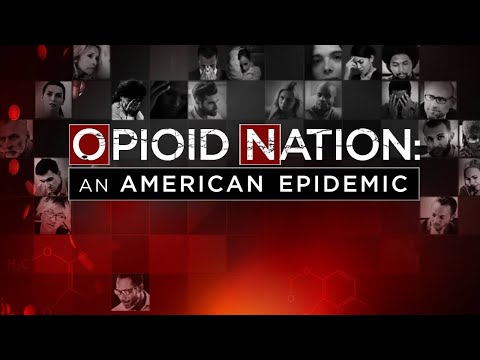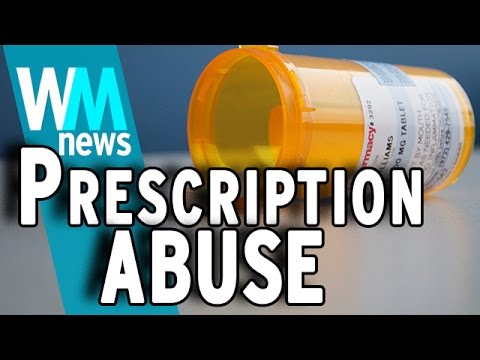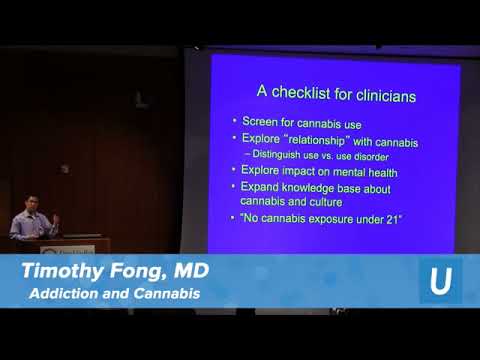The prevalence of addictions in the U.S. has seen a dramatic rise and led to increased unhappiness and even more cases of depression than was reported a decade ago. Let’s review the top 10 addictions in the U.S.
10 Internet
It’s hard for any regular person to imagine going a day without logging into their computer or smartphone because these devices currently define our lives. Much of our daily activities are now dependent on the internet, from moving around conveniently to medical services and food delivery. The benefits of the internet are obvious, but we hardly consider the addiction risks everyday internet use exposes us to. In 2021, the Pew Research Center reported that approximately 77% of Americans use the internet daily. While binge-watching TikTok videos and streaming movies are relatively harmless activities, some people’s constant need to browse the internet interferes with their regular life. Some don’t go out for days, sacrifice personal relationships, and neglect their hygiene because of the internet. It becomes an addiction when you prioritize browsing the internet over critical aspects of your life, like work and relationships. Internet addiction is a broad term for various impulse control issues involving a smartphone or computer. Examples include cyber relationship addiction, net compulsions, obsessive information seeking, and online gaming.
9 Food
Food is one of the most surprising addictions anyone can have because, unlike drugs, it’s impossible to abstain from food. But, if you’re struggling with grasping food addiction, you only need to look at obesity statistics in the U.S. to understand it. Watch this video on YouTube Some reports indicate that at least 5% of the U.S. population has a food addiction. Generally, food addiction affects more women than men, where the global average is 7% and 3%, respectively. Like drug addiction, food addiction can lead to cravings and tolerance. Cravings are displayed in the obsessive need to eat despite the negative consequences. Food addicts build tolerance by requiring more food to maintain the same dopamine levels. The causes of food addiction are unclear, but some research indicates that genetics, brain chemistry, and stress eating are among the top possible causes.
8 Gambling
The internet has also contributed to widespread gambling due to accessibility to betting sites and apps. Gambling is legal and, in most cases, unproblematic. But the fun and social connotation attached to gambling activities prevent many with a problem from admitting it. Only 20% of people who reported a gambling addiction accepted that their gambling might actually be a problem. Watch this video on YouTube Recent reports indicate that approximately six million Americans live with a gambling problem. Unfortunately, many might not recognize the signs until it’s too late. Even though a gambling addiction doesn’t pose any immediate health risks, it can lead to diminished quality of life and compound to substance abuse and depression. Additionally, gambling is linked to increased relationship friction that results in domestic violence. Children raised by parents with gambling problems are at a higher risk of developing mental health and drug abuse problems. Gambling is also linked to increased crime rates as people frequently commit fraud, forgery, shoplifting, and petty theft to obtain money for their gambling activities.
7 Sex and Pornography
The internet may be the best invention yet, but with it came myriad addictions, including pornography. Sex and pornography addiction are controversial, with some researchers and therapists arguing that it doesn’t exist. The lack of agreement between experts on decisive factors that classify sex and pornography addiction also makes it difficult to recognize when someone is struggling with an addiction to adult content. Watch this video on YouTube Still, it’s critical to note that approximately 3% to 6% of the U.S. population struggle with sex or porn addiction. Additionally, about 35% of all internet downloads are related to pornographic material. Many people who access and view pornography don’t have an addiction. Addiction begins when someone has an obsessive compulsion to view adult content, forcing them to take irresponsible risks. Other factors that point to porn addiction include:
Dissatisfaction with an otherwise healthy sex life Relationship issues because of dissatisfaction with your partner Engaging in risky behavior like viewing the content at work
Part of why pornography and sex addiction are rampant is the ease of internet access. This also increases the risk of exposure to minors and teenagers who may develop unhealthy views of sexual relationships.
6 Heroin
Heroin, also referred to as opioid, is a drug made from the opioid poppy plant seed pods. This plant grows mostly in Southeast and West Asia, Colombia, and Mexico. It comes in the form of a black or white powder or a sticky substance known as black tar heroin. Watch this video on YouTube Heroin is addictive, but sometimes people mix it with cocaine to elevate its effects. This practice is referred to as speed-balling. This drug binds to brain receptors responsible for pain, pleasure, and sleep. It alters these functions by creating an “intense rush of serotonin.” A heroin rush is usually accompanied by a mixture of feelings, a dry mouth, and a warm feeling on the skin. After the initial sensation wears off, users can experience nausea, vomiting, or intense itching. Depending on the dosage, if the mental function is impaired for too long, it can result in slow breathing and heart rate, which can sometimes be life-threatening. One of the reasons why heroin is highly addictive is because users develop tolerance quickly. After using it regularly for a few weeks, you will need a higher dosage to maintain the same intensity. This leads to addiction. Health risks of heroin addiction include increased exposure to infections like HIV, heart and liver diseases, collapsed veins, and overdoses. Beating a heroin addiction can also be extremely challenging, with some users experiencing intense cravings years after stopping heroin use. Cravings can be triggered by stress, people, events, and other things you might associate with the drug.
5 Cocaine
Cocaine is the second most popular illegal recreational drug in the U.S. after marijuana. Significant use of cocaine in the U.S. began in the mid-1980s and early ’90s and is still one of the most abused drugs today. According to a 2020 National Survey on Drug Use and Health report, regular cocaine users stood at 0.8% or 1.9 million people. Only a quarter of these reported cocaine users consume crack cocaine, meaning that most use it in powder form. Watch this video on YouTube Cocaine is a highly addictive drug with the potential for physical and psychological dependence. It also poses several health risks, which include high blood pressure, cardiovascular diseases, weight loss, mood disorders, strokes, and seizures. The Drug Enforcement Administration classifies cocaine as a Schedule II controlled drug despite its potential for addiction because it has few medicinal uses. Hospitals use it to stimulate vital bodily functions like heart rate, blood pressure, and temperature.
4 Prescription Drugs
The U.S. has seen a sharp rise in prescription drug abuse and addiction cases in the last five years compared to the previous decade. Prescription drug abuse has risen significantly over the years because of accessibility, affordability, and the misconception that they are less detrimental to your health. Sadly, prescription drug abuse has several long-term health consequences that can quickly turn chronic when left unattended. For example, opioid abuse, the leading prescription drug addiction, mimics heroin addiction. It can lead to nausea, constipation, shallow breath, and drowsiness. Side effects of stimulants, such as drugs prescribed for conditions like ADHD, are similar to cocaine withdrawal. They include high temperature, paranoia, weight loss, and irregular heartbeat. The most prevalent cases of prescription drug addiction fall under painkillers, stimulants like Ritalin, and sedatives used to treat tension and sleeping disorders.
3 Marijuana
Marijuana is widely considered a recreational drug in the U.S., currently legal in 21 states and Washington, D.C. Unfortunately, long-term use of marijuana can lead to addiction and a risk of developing psychosis and schizophrenia. Users associate marijuana with creativity boost and relaxation. This is because it affects parts of the brain responsible for attention, learning, coordination, and decision-making, giving the user an illusion of creativity and an energy boost. Approximately 18% of Americans, or 42 million people, reported regular marijuana use in 2020. Research also indicates that three of 10 regular marijuana users have a marijuana abuse problem making it the third-highest addiction in the U.S. Even though the safety and effects of marijuana are highly politicized, studies indicate that it can indeed be addictive and have detrimental withdrawal symptoms after long-term abuse. Enthusiasts might argue that the medical benefits of marijuana far outweigh its negatives, but it’s not the case for everyone. Studies show that teenagers who start using marijuana before 18 are likely to get addicted and abuse the drug. Additionally, the use of marijuana during pregnancy or breastfeeding can lead to various health risks. Before buying into the popular ‘weed culture,’ ensure you have the right information about marijuana abuse and its risks.
2 Alcohol
Despite its significant consequences, alcohol addiction has been underestimated for many years. This is because alcohol is a legal and socially acceptable drug. These facts make it harder to detect when someone is succumbing to addiction, only to notice when it’s too late. There are many facts that you may not know about alcohol. First, at least 26% of American adults reportedly indulged in regular binge drinking as of 2019. Of course, many people who drink, even regularly, are not likely to develop an alcohol addiction problem. But this is largely dependent on how well they adhere to daily limits. In many cases, alcohol addiction begins as a harmless social habit that evolves into full-blown dependence that can lead to serious health issues like depression. For example, most typical beverage servings in bars and restaurants have a higher alcohol percentage than a standard drink. Another alcohol fact that many people conflate is alcoholism and alcohol abuse. Alcoholism is a brain change that causes a constant obsession with drinking. Alcoholism will lead to drinking even when you didn’t intend to. Alcohol abuse, on the other hand, is taking alcohol in a manner that leads to neglect and irresponsible behavior like drunk driving or failing to go to work. Alcohol abuse leads to alcoholism.
1 Nicotine
Approximately 30 million Americans are addicted to nicotine products, including cigarettes, cigars, patches, nicotine gums, or snuff. Nicotine is the most abused drug in the U.S., with reports showing that teens as young as 13 are dependent on the drug. Many people addicted to nicotine mistakenly think that cigarette smoking or other nicotine use helps them relax. Nothing could be further from the truth. Recent studies show that nicotine use leads to increased stress levels. After the effects of nicotine use wear off, users start to crave another dose, and this causes them to be cranky and tense. The shocking thing is that despite the widely reported side effects of nicotine use, the U.S. has not seen a significant drop in nicotine users in recent years. Research shows that nicotine users die 10 to 13 years earlier than non-users, but it is still not motivating enough to stop, perhaps because nicotine is among the most addictive drugs. It’s essential to note that most teenagers who start smoking or using some form of nicotine remain users for the rest of their lives. What makes nicotine more dangerous is many users result to unhelpful alternatives like e-cigarettes or cigars, thinking they are healthier. One would think that in this day and age where health and looks are a priority for most, the threat of stained teeth, red gums, and mouth odor would help people keep off nicotine use, but it seems like health campaigns have to take a different approach.

